Article
Channel Islands Bald Eagles Have Their Best Year Yet
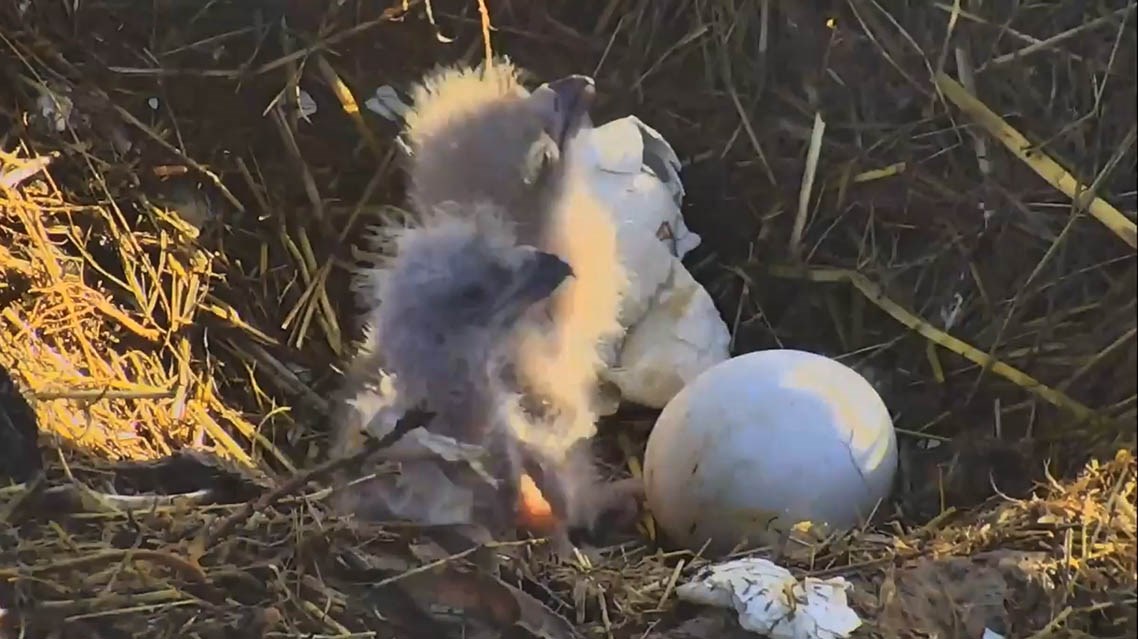
July 2018 - In the middle of March, biologists and bald eagle fans watched with excitement as a live webcam captured three eggs hatching within a few days of each other on a nest in Sauces Canyon, Santa Cruz Island. A second webcam at another nest on Santa Cruz Island’s Fraser Point captured a similar scene: three more eggs hatching in close succession.
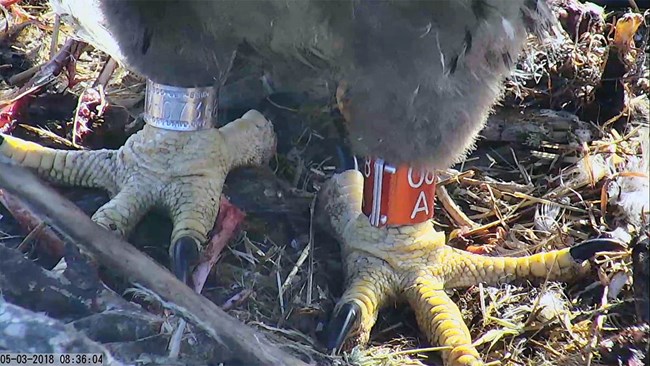
In early April, these young eaglets were puzzled but unharmed by their first earthquake. Another milestone came in May, when biologists climbed up to their nests, lowered them to the ground, fitted them with shiny new metal leg bands, measured them, drew blood samples, and gently returned them to their nests.
The leg bands will allow birders and biologists to report sightings of the individual eagles after they leave their nests. Since females bald eagles are 25% larger than males, the measurements served to determine their sex. Two females and a male were found in each of the Sauces Canyon and Fraser Point nests.
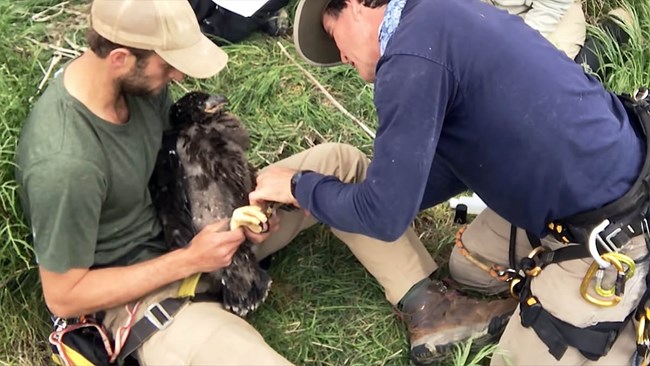
Blood samples can help confirm the birds’ sex, and may also be analyzed for contaminants. This testing is primarily to detect DDE, a byproduct of the now-banned pesticide DDT, that still lingers in the southern California ocean where bald eagles find most of their meals. DDE, which weakens birds’ egg shells, was one of the factors, along with human persecution, that triggered the bald eagles’ total disappearance from the Channel Islands in the 1960s.
That bald eagles are back on the islands today is a testament to the success of decades of restoration efforts, which started on Santa Catalina Island in the 1980s. The Fraser Point eaglets’ grandparents, for example, were hand reared before being fostered into the nests of eagle pairs on Santa Catalina Island. When they matured, they eventually established their own nest on Santa Cruz Island. Their first chick, the adult female at Fraser Point today, was the first bald eagle to hatch naturally on the Channel Islands in over 50 years.
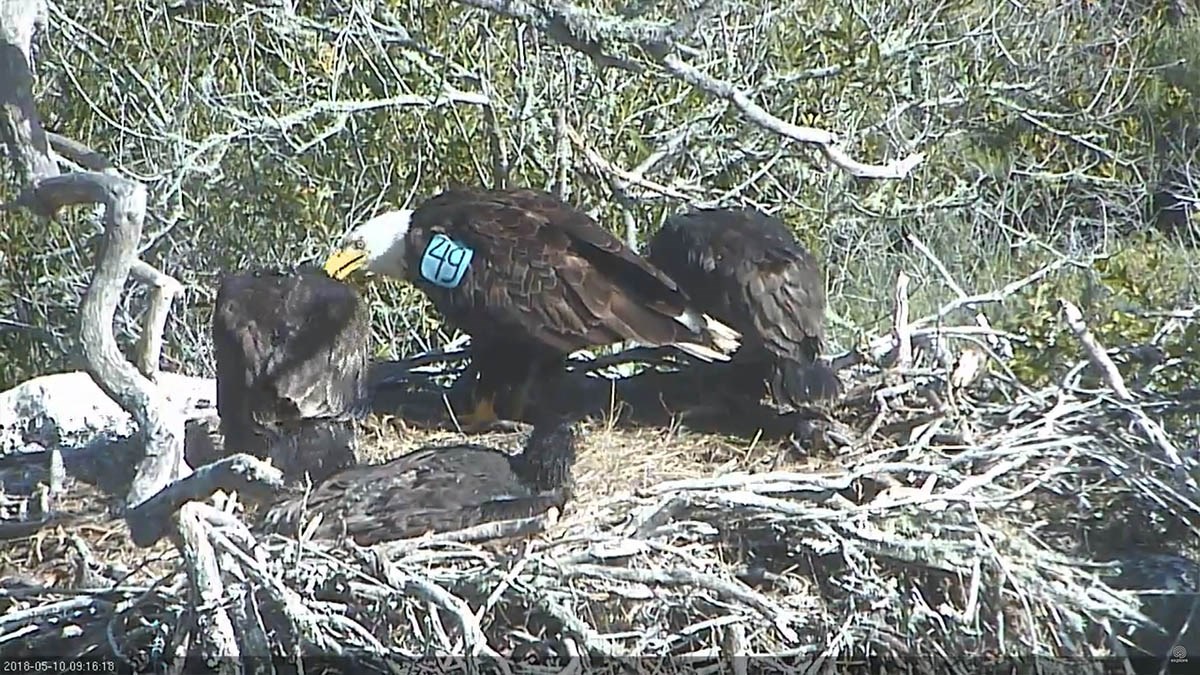
Now, not only are bald eagles back on the Channel Islands, but their population has been growing without human help since 2009. By early June, the eldest of the Sauces Canyon eaglets had already successfully fledged (flown from her nest). The other Sauces Canyon and Fraser Point eaglets soon followed. That a full three chicks hatched and fledged from two different nests was itself an uncommon victory. The bigger picture this year is brighter still. Those six were among a total of 19 chicks to be successfully raised by a record 20 breeding bald eagle pairs, across Santa Cruz, Santa Rosa, Santa Catalina, and San Clemente Islands.
What is next for this generation of Channel Islands bald eagles? Some may stay close to home. If they do, they will join the ~60 eagles estimated to currently live on the islands, including at least 45 adults (over five years old) and a variety of younger eagles.
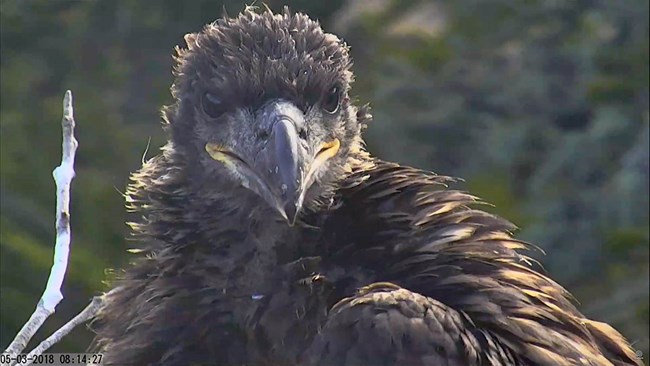
Prepared by the Mediterranean Coast Inventory and Monitoring Network.
